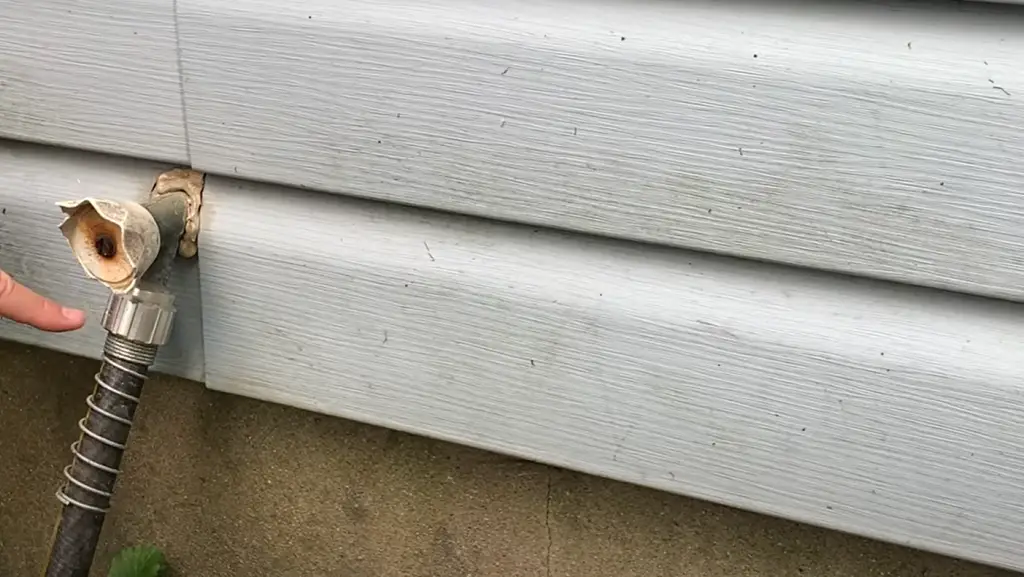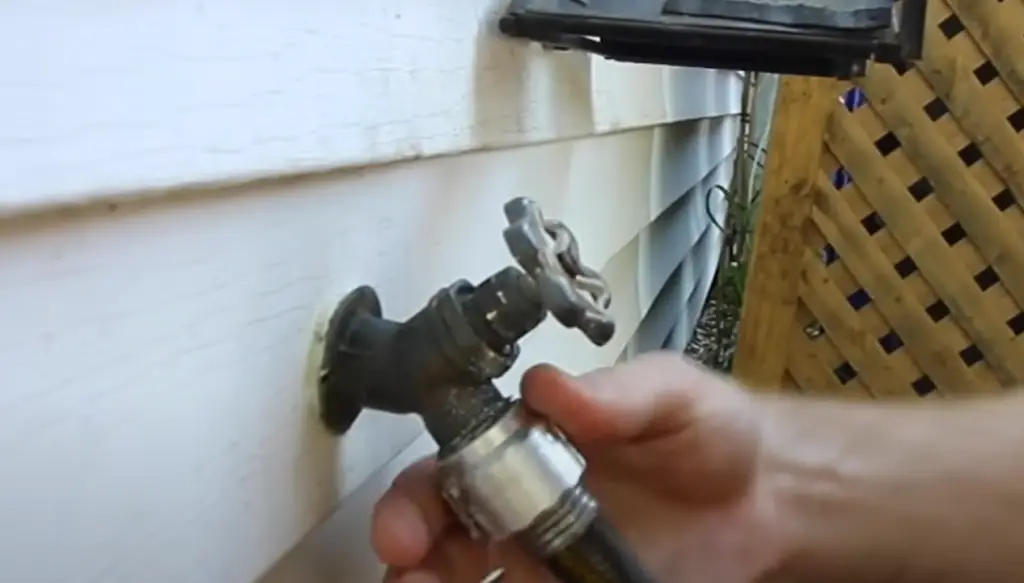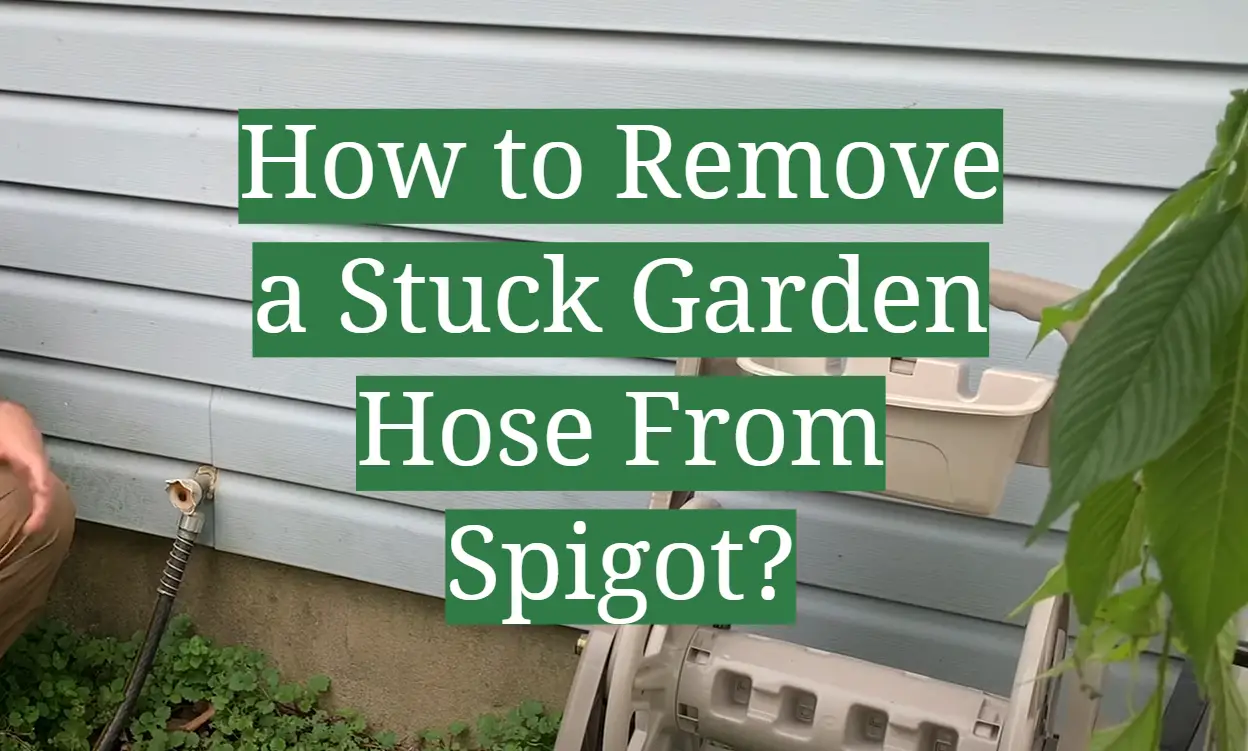It’s happened to the best of us. You go outside to water your plants and turn on the hose, but nothing comes out. You quickly realize that the hose is stuck tight and won’t budge. This can be a major annoyance, especially if you’re in a hurry. In this article, we will provide you with a complete guide on how to remove a stuck garden hose from a spigot. We’ll answer some common questions and provide you with some helpful tips that will make the process much easier!
How to prevent your garden hose from getting stuck to the faucet?
It’s important to take some preventive measures to avoid this problem in the first place. Here are a few tips:
- Make sure the hose is properly connected to the spigot before turning on the water. This may seem like a no-brainer, but it’s often the cause of hose problems!
- When you’re finished using the hose, be sure to turn off the water at the spigot and disconnect the hose. This will prevent any residual water from building up and freezing inside the hose, which can make it very difficult to remove later on.
- If you live in an area with cold winters, it’s a good idea to store your garden hose indoors when not in use. This will help protect it from the elements and prolong its lifespan.[4]
Why Did My Hose Get Stuck?
One of the most common reasons a garden hose gets stuck is because of rust. If your hose is made of metal, it’s especially susceptible to rusting over time. Another reason your hose might be stuck is because of mineral build-up.

This can happen if you have hard water, which leaves behind deposits that can clog up your hose. Lastly, your hose could be frozen in place if it’s exposed to extreme cold temperatures.[4]
Here’s What You Need to Get Started
- A pair of pliers
- An adjustable wrench
- A hacksaw or a utility knife
- Teflon tape
- Thread sealant (optional)
With the right tools, removing a stuck garden hose from a spigot is a relatively easy task.[1]
How to Remove a Stuck Garden Hose
Cut garden hose connector at angle
If your garden hose is stuck on the spigot and you can’t seem to remove it, don’t despair. With a little effort, you should be able to get that hose off in no time.
One way to remove a stuck garden hose is to cut the garden hose connector at an angle with a utility knife. This will give you some extra leverage to pull the hose off the spigot. Just be careful not to cut yourself in the process.
Once you’ve cut the connector, place one hand on each side of the cut and pull firmly until the garden hose comes loose from the spigot. If necessary, use a pair of pliers to help loosen stubborn hoses.[1]
Pry open the cut with a screwdriver
If the hose is still stuck, you can try prying open the cut with a screwdriver. This will help to loosen the grip of the hose on the spigot.
Once you’ve got the hose removed, inspect it for any damage that may have occurred during removal. If there are any holes or tears, you’ll need to replace the hose. Otherwise, you should be good to go!

If you’ve followed these steps and are still having trouble removing a stuck garden hose from your spigot, it’s time to call in the professionals. A plumber can help you remove the hose and make sure that your spigot is in good working order.[1]
Unscrew garden hose with pliers
If your garden hose is stuck on the spigot, you may be able to remove it by unscrewing it with a pair of pliers. If the hose is made of metal, you can also try using a hacksaw to cut through the hose.[1]
Repeat steps 2 and 3 as needed
If your hose is still stuck after repeating steps two and three, then you may need to use a little more force. If you have a pair of pliers, you can try to grip the end of the hose and twist it while pulling. If that doesn’t work, then your next best option is to cut the hose off close to the spigot with a sharp knife or scissors. Be careful not to damage the spigot itself when doing this.
Once you’ve successfully removed the garden hose from the spigot, it’s important to take some preventative measures so that it doesn’t happen again in the future. First, make sure that you always screw the hose onto the spigot tightly by hand. It may seem like overkill, but using a wrench or pliers can actually damage the threads and make it harder to remove the hose later on.
Another good idea is to invest in a rubber or silicone garden hose washer. These washers create a tighter seal between the hose and the spigot, which makes it less likely for the hose to become stuck in the first place. You can find these washers at most hardware stores.[1]
How to Replace a Garden Hose Connector
Cut off the old connector
Use a utility knife to score around the circumference of the connector where it meets the hose. This will help you get a clean cut when you remove the connector.
Once you have scored the connector, use a pair of pliers to twist and pull the connector off of the hose.

If there is any residual glue or sealant on either the hose or the spigot, use a rag soaked in vinegar to remove it.[1]
Add the new hose connector
Once you’ve removed the old garden hose, it’s time to install the new one. Start by screwing on the new hose connector. Make sure that it’s screwed on tight so that there are no leaks.
Just be careful not to damage the threads on the connector or the spigot.Once the new connector is in place, screw on the garden hose. Again, make sure that it’s screwed on tightly so that there are no leaks. You should now have a functioning garden hose!
Wrap Teflon tape around threads
Teflon tape is a great way to help prevent garden hoses from getting stuck on spigots. Simply wrap the threads of the spigot with the tape before screwing on the hose. This will create a barrier between the metal and the hose, making it much easier to remove later on.
If you don’t have Teflon tape, you can also use petroleum jelly or even WD-40. Just be sure to apply it generously so that there’s enough lubrication between the surfaces.[1]
Screw new hose connector onto spigot
Do not overtighten, as this may strip the threads or damage the washer. Hand-tightening is usually sufficient. If the new connector does not fit snugly, then you may need to replace your garden hose altogether.
Once the new connector is in place, turn on the water at the spigot by turning the handle clockwise until it is fully open. Water will flow out of the end of the hose.
If water leaks from around the connection of the hose and spigot, then you will need to tighten the connector slightly with a wrench. Do not overtighten, as this can strip the threads or damage both the connector and spigot.[1]
How to Prevent Hose from Getting Stuck
Now that you know how to remove a stuck garden hose, here are some tips on how to prevent it from happening again:
- Make sure to clean out the spigot regularly. A build-up of dirt and grime can cause the hose to become stuck.
- Be careful not to kink or twist the hose when attaching it to the spigot. This can damage the hose and make it more likely to get stuck.
- If possible, avoid leaving the hose attached to the spigot for long periods of time. This can put unnecessary strain on the connection and cause leaks.[4]
Keep Your Garden Hose from Freezing
If you live in an area where the temperatures dip below freezing, you’ll need to take some extra steps to keep your garden hose from freezing. One option is to invest in a heated water hose, which will prevent the water inside from freezing solid. Another option is to store your hose indoors when it’s not in use. If neither of these options is possible or practical for you, then be sure to drain all the water out of your hose before winter sets in. This will help prevent the hose from bursting once the water inside freezes solid.

With a little bit of care and attention, you can keep your garden hose in good condition for many years to come. By following the tips outlined above, you’ll be able to remove a stuck garden hose from your spigot quickly and easily. And, you’ll be able to keep your hose in good condition so that it will last for years to come.[1]
How to Loosen a Tight Hose on a Spigot
If your hose is tightly wound on the spigot, you may be able to loosen it by using a pair of pliers. Just be careful not to damage the threads on the connector or the spigot.
Once you’ve loosened the connection, you should be able to remove the hose by unscrewing it from the spigot. If you’re still having trouble, you may need to replace your garden hose altogether.[1]
Small Hose Basket
If you have a small hose basket, you can try to remove the garden hose by gently twisting it and pulling it out. If the hose is stuck, you may need to use a little force. Be careful not to damage the spigot or the garden hose.[3]
The Best Types Of Garden Hose Spigots
There are a few types of garden hose spigots that you can choose from, and each has its own set of benefits. The most common type is the standard garden hose spigot, which is typically made of metal or plastic.
However, they can be prone to leaking, so it’s important to check them regularly for leaks.Another type of garden hose spigot is the pressure-activated garden hose spigot. These spigots are designed to open when water pressure is applied to them, making them ideal for use in areas where there is a lot of foot traffic. However, they can be more difficult to install and may require professional help.

The last type of garden hose spigot is the automatic garden hose spigot. These spigots are designed to turn on and off automatically, making them very convenient for use in areas where there is little or no water pressure. However, they can be more expensive than other types of garden hose spigots.[4]
FAQ
How do you keep a hose from sticking to the faucet?
If your hose is constantly getting stuck to the faucet, there are a few things you can do to prevent it. First, make sure that the end of the hose is clean and free of debris. Second, apply a light coating of lubricant to the end of the hose. This will help to reduce friction and make it easier for the hose to slide on and off the faucet. Finally, be sure to properly store your hose when not in use. This will help to keep it from getting kinked or tangled, which can also cause it to get stuck on the faucet.
How do you separate a stuck garden hose?
The best way to remove a stuck garden hose is to use a pair of pliers. First, try to grip the hose near the base of the spigot. If the hose is too far gone, you may need to cut it off with a utility knife. Be very careful not to damage the threads on the spigot as this will make it more difficult to remove the hose in future.
Once you have a good grip on the hose, twist it back and forth until it comes loose. You may need to use quite a bit of force, so be sure not to damage either the spigot or the hose itself. If all else fails, you can always call a professional for assistance.
Which way do you turn a hose to unscrew it?
If you’re not sure which way to turn the hose to unscrew it, try both directions. If one direction is harder to turn, that’s probably the direction you need to go in. If the hose is really stuck, you may need to use a wrench or pliers to help loosen it.
Why won’t the hose come off the spigot?
There are a few reasons your hose might be stuck on the spigot. The most common reason is that the hose has become frozen to the spigot due to cold weather. If this is the case, you’ll need to thaw out the hose before you can remove it.
Another possibility is that there is something blocking the connection between the hose and the spigot. This could be a build-up of dirt or debris, or it could be a foreign object that’s become wedged in there. In either case, you’ll need to clean out the connection before you can remove the hose.
Finally, it’s possible that the threads on either the hose or the spigot have become damaged or stripped. This can make it very difficult to remove the hose, and you may need to replace either the hose or the spigot (or both) in order to fix the problem.
Useful Video: Garden Hose Stuck to Spigot? Here’s the Best Way to Remove It!
Conclusion
So, that’s how you remove a stuck garden hose from your spigot. We hope this article was helpful and that you found the information you were looking for. If you have any other questions or tips on this topic, please leave us a comment below. Thanks for reading!
References:
- https://www.1tomplumber.com/how-to-remove-stuck-garden-hose/
- https://www.hunker.com/12192045/how-to-remove-stuck-garden-hoses
- https://mygardenplant.com/hose-stuck-on-spigot/
- https://gardenhosezone.com/garden-hose-stuck-on-faucet/










Leave a Reply
View Comments